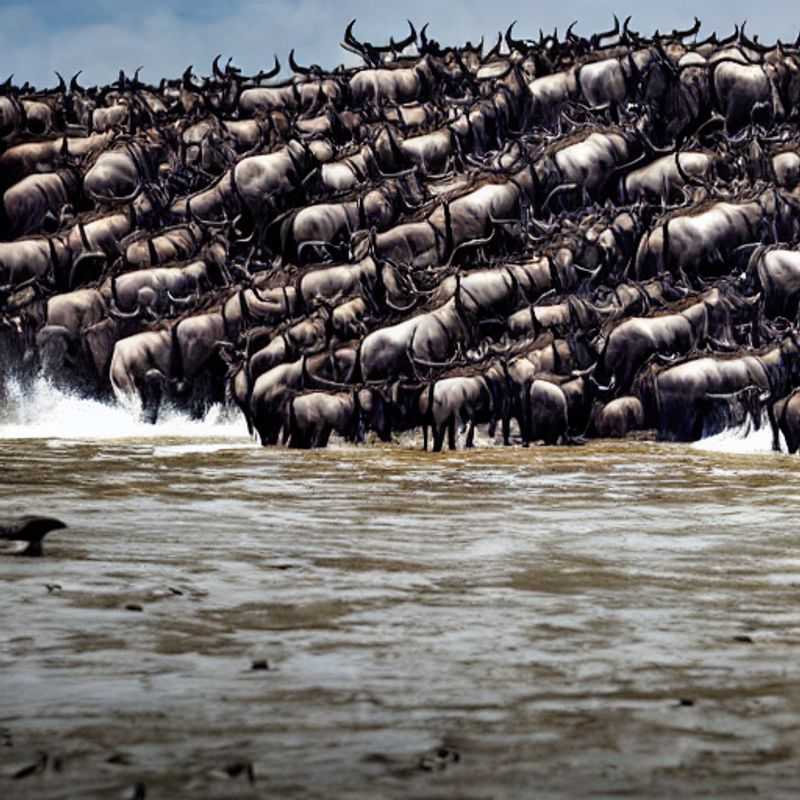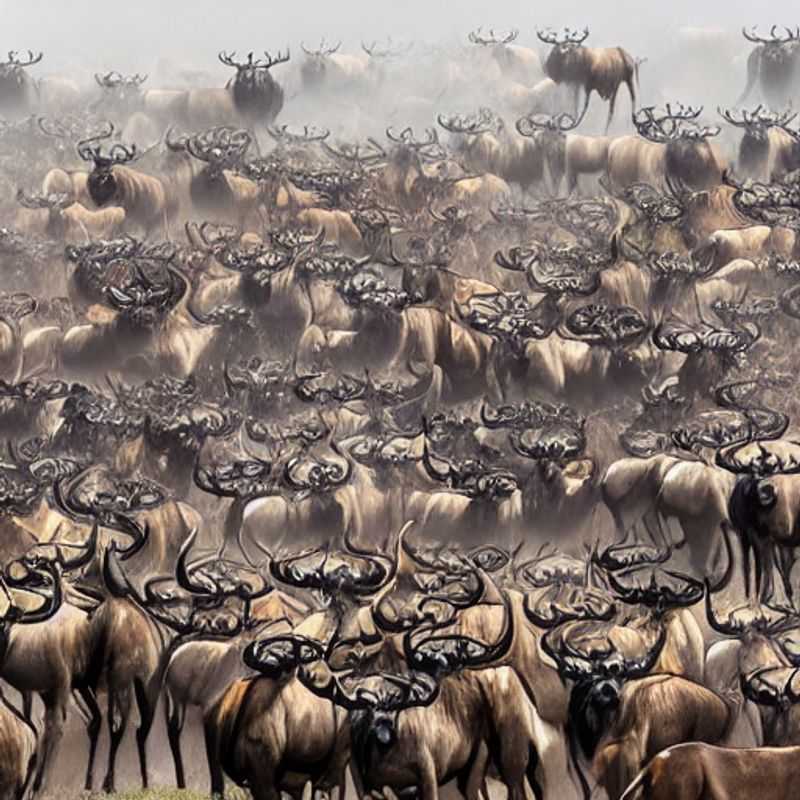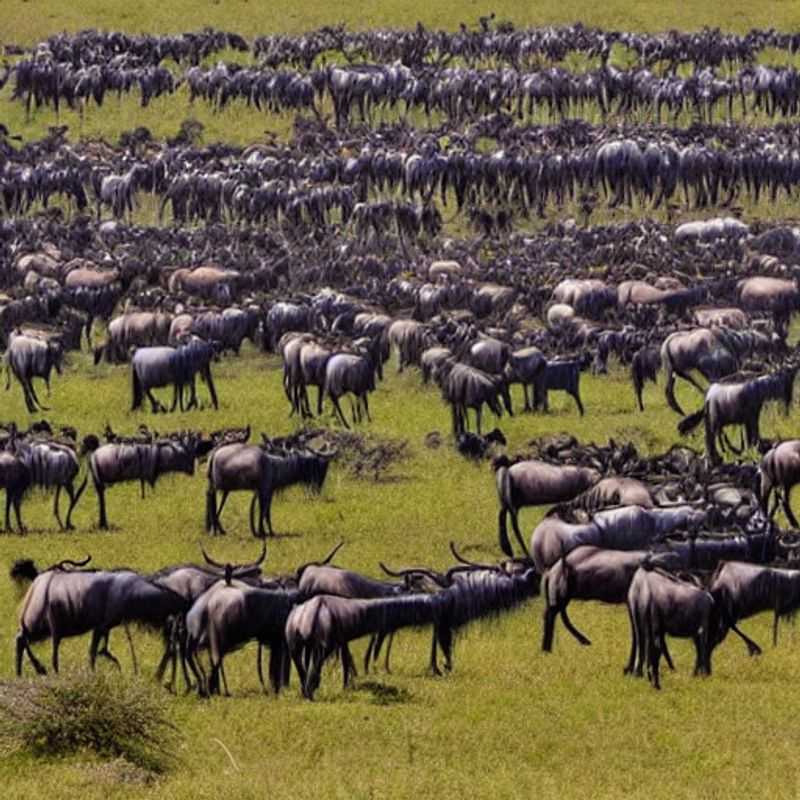Wildebeest Migration Safaris: Top 4 Safety Tips for an Unforgettable (and Unharmed!) Adventure in Kenya & Tanzania

2026 Wildebeest Migration: Essential Safety & Practical Tips for Kenya & Tanzania
Planning to witness the majestic Wildebeest Migration in Kenya and Tanzania in 2026 requires careful preparation to ensure both safety and an unforgettable experience. This natural spectacle, while breathtaking, involves navigating vast wilderness areas, so prioritizing your well-being is paramount.
When traveling in 2026, remember that early booking is crucial, especially for prime safari lodges and experienced tour operators who understand the migration's dynamic patterns. These operators are vital for navigating potential hazards and securing optimal viewing locations.
Regarding safety, always listen to your guides. They possess invaluable knowledge of animal behavior and the terrain. Never exit your safari vehicle unless explicitly permitted by your guide, as you are in an environment with potentially dangerous wildlife. Maintain a respectful distance from all animals, and resist the urge to feed them, as this can lead to unpredictable and dangerous encounters.
Practical tips for your 2026 migration adventure include packing appropriate clothing: lightweight, neutral-colored attire is best to blend in with the environment and avoid attracting insects. Don't forget sun protection – hats, sunglasses, and high-SPF sunscreen are essential. A good pair of binoculars will significantly enhance your viewing pleasure, allowing you to observe the herds and individual animals in detail.
Be prepared for varying weather conditions, even within the dry seasons. Pack a light rain jacket and warm layers for cooler mornings and evenings. Staying hydrated is also critical, so carry a reusable water bottle and ensure you have access to safe drinking water throughout your safari. Finally, embrace the adventure and the incredible opportunity to witness one of Earth's greatest natural wonders – the wildebeest migration is a truly awe-inspiring event.

You may also like
Wildebeest Migration: Chasing the Great Migration...and Avoiding the Great Upheaval! (A Guide to Staying Safe Amidst Political Whims)
Rumble in the Savannah: Navigating Political Instability During the Wildebeest Migration (Safely!)
Serengeti Secrets & Safety: Uncovering Ancient Mysteries While Dodging Modern Mayhem (A Traveler's Guide to Kenya & Tanzania)
The Wildebeest Migration: More Than Just a Spectacle - A Guide to Safe Travel in Uncertain Times
Beyond the Migration: Decoding Political Landscapes and Ensuring Your Safety in Kenya & Tanzania
Ancient Spirits & Modern Politics: A Safe Journey Through the Wildebeest Migration's Intriguing History
From Myths to Mayhem: Understanding Political Risks and Planning a Safe Wildebeest Migration Adventure
Gnu-Guaranteed Safety: Practical Tips for Navigating Potential Civil Unrest During Your Safari
Whispers of Rebellion, Roars of the Wildebeest: A Balanced Look at Safety During the Great Migration
The Wildebeest's Wisdom: Balancing Adventure and Safety in a Politically Complex Region
Jambo, fellow adventurers! So, you four fancy-pants Staycationers are thinking of braving the Wildebeest Migration in Kenya and Tanzania during spring? Excellent choice! But let's talk elephant – or rather, let's talk potential for political instability. Now, don't panic! It's rarely a major disruption to tourism, but being prepared is key to a smooth safari.
Spring in the Serengeti and Maasai Mara is breathtaking, with millions of wildebeest thundering across the plains. The weather is warm and sunny, perfect for game viewing, but be ready for unpredictable afternoon showers. Pack layers! As for the political climate...well, things can be a bit… unpredictable. Keep an eye on reputable news sources before you go and check with your embassy or consulate for any travel advisories.
Kenya and Tanzania are culturally rich and diverse. You'll meet Maasai people, known for their vibrant red clothing, strong traditions, and incredible jumping dances. Expect delicious food – think nyama choma (grilled meat), ugali (maize porridge), and plenty of fresh fruit. In Tanzania, try the spicy coconut-based curries. Remember to be respectful of local customs; dress modestly when visiting villages, and always ask permission before taking photographs. Music is a big part of their culture, with traditional drums and songs accompanying many events.
Now, about the costs. Let's assume a 10-day trip, splitting costs between the four of you. Flights to either Nairobi (Kenya) or Kilimanjaro (Tanzania): $1000 per person (approx), internal flights: $500 per person (approx), Accommodation (mix of lodges and mid-range hotels): $500 per person (approx), Park fees and game drives: $1000 per person (approx), Activities (hot air balloon safari, cultural tours): $500 per person (approx), Food and drinks: $500 per person (approx), Miscellaneous expenses: $200 per person (approx).Total estimated cost per person: $4200. For four of you, that's approximately $16,800. Of course, these are estimates. Luxury accommodations, more activities, and your drinking habits will affect the total.
Local people are generally very welcoming to tourists, but be mindful that you are visitors in their land. Respectful behavior, a genuine interest in their culture, and a little Swahili ("Jambo!" goes a long way!) will make your experience richer. Many tourists come with high spirits and cameras ready, excited by the chance to witness the Great Migration. Expect lively conversations around campfires. As for architecture, expect a mix of traditional mud huts and modern buildings, especially in towns.
Safety first, friends! Stick to well-lit areas at night. Be aware of your surroundings, don't flaunt expensive jewelry, and inform someone of your plans. Use reputable tour operators; this is not the time for DIY adventures. A bit of healthy paranoia never hurt anyone on safari.
So, pack your bags, Staycationers! The Wildebeest Migration awaits! Just remember the three Ps: Preparation, Patience, and a healthy dose of Preparedness for the unexpected!

You may also like
Wildebeest Migration Backpacking 2026: Practical Insights for Kenya & Tanzania
Planning a safari to witness the Wildebeest Migration in Kenya or Tanzania in 2026 requires meticulous preparation. This guide offers practical insights to ensure an unforgettable adventure. The migration is a natural phenomenon, and timing is paramount; research the expected migration patterns for 2026 to pinpoint the best locations and months for your visit. Consider the Maasai Mara in Kenya for the river crossings (typically July to October) or the Serengeti in Tanzania for calving seasons (January to March), though these are generalizations and subject to change.
When it comes to accommodation, options range from luxury lodges and tented camps to more budget-friendly campsites. Booking well in advance is highly recommended, especially for peak migration periods, as availability can be limited. For the optimal wildlife viewing experience, opt for camps strategically located within or near the migration corridors. Early morning and late afternoon game drives are crucial for spotting predators and observing animal behavior at its most active.
Transportation within the parks usually involves 4x4 safari vehicles, often open-topped for unobstructed views. Many tour operators offer packages that include park fees, accommodation, meals, and guided game drives, simplifying logistics. However, if you prefer more flexibility, consider arranging your own transport and accommodation, but be aware of the complexities involved. Packing essentials include lightweight, neutral-colored clothing, a good quality camera with a zoom lens, binoculars, a wide-brimmed hat, sunscreen, insect repellent, and sturdy walking shoes for any bush walks offered.
Safety is a priority. Always follow the guidance of your experienced safari guides, who are trained to handle wildlife encounters. Maintain a safe distance from animals, never feed them, and avoid making loud noises or sudden movements. Understand that this is a wild environment, and encounters are not guaranteed, but with careful planning and realistic expectations, your 2026 wildebeest migration safari will undoubtedly be a journey of a lifetime.